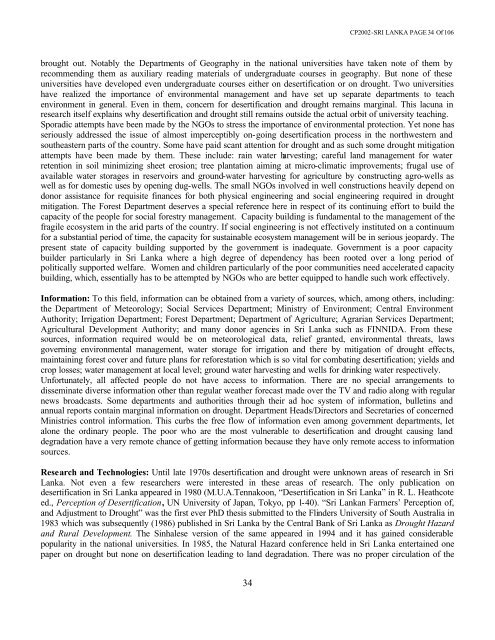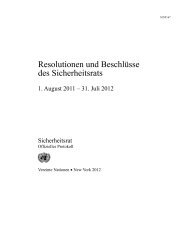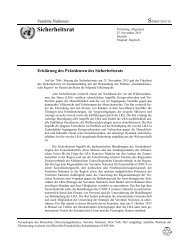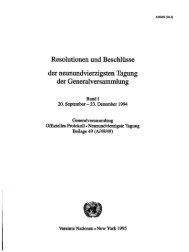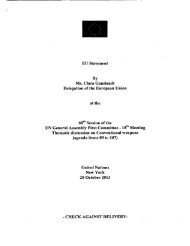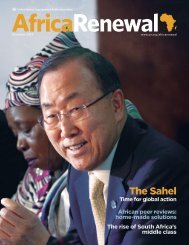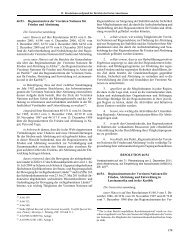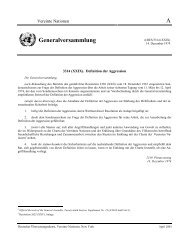SRI LANKA COUNTRY PROFILE
SRI LANKA COUNTRY PROFILE
SRI LANKA COUNTRY PROFILE
You also want an ePaper? Increase the reach of your titles
YUMPU automatically turns print PDFs into web optimized ePapers that Google loves.
34<br />
CP2002-<strong>SRI</strong> <strong>LANKA</strong> PAGE 34 Of 106<br />
brought out. Notably the Departments of Geography in the national universities have taken note of them by<br />
recommending them as auxiliary reading materials of undergraduate courses in geography. But none of these<br />
universities have developed even undergraduate courses either on desertification or on drought. Two universities<br />
have realized the importance of environmental management and have set up separate departments to teach<br />
environment in general. Even in them, concern for desertification and drought remains marginal. This lacuna in<br />
research itself explains why desertification and drought still remains outside the actual orbit of university teaching.<br />
Sporadic attempts have been made by the NGOs to stress the importance of environmental protection. Yet none has<br />
seriously addressed the issue of almost imperceptibly on-going desertification process in the northwestern and<br />
southeastern parts of the country. Some have paid scant attention for drought and as such some drought mitigation<br />
attempts have been made by them. These include: rain water harvesting; careful land management for water<br />
retention in soil minimizing sheet erosion; tree plantation aiming at micro-climatic improvements; frugal use of<br />
available water storages in reservoirs and ground-water harvesting for agriculture by constructing agro-wells as<br />
well as for domestic uses by opening dug-wells. The small NGOs involved in well constructions heavily depend on<br />
donor assistance for requisite finances for both physical engineering and social engineering required in drought<br />
mitigation. The Forest Department deserves a special reference here in respect of its continuing effort to build the<br />
capacity of the people for social forestry management. Capacity building is fundamental to the management of the<br />
fragile ecosystem in the arid parts of the country. If social engineering is not effectively instituted on a continuum<br />
for a substantial period of time, the capacity for sustainable ecosystem management will be in serious jeopardy. The<br />
present state of capacity building supported by the government is inadequate. Government is a poor capacity<br />
builder particularly in Sri Lanka where a high degree of dependency has been rooted over a long period of<br />
politically supported welfare. Women and children particularly of the poor communities need accelerated capacity<br />
building, which, essentially has to be attempted by NGOs who are better equipped to handle such work effectively.<br />
Information: To this field, information can be obtained from a variety of sources, which, among others, including:<br />
the Department of Meteorology; Social Services Department; Ministry of Environment; Central Environment<br />
Authority; Irrigation Department; Forest Department; Department of Agriculture; Agrarian Services Department;<br />
Agricultural Development Authority; and many donor agencies in Sri Lanka such as FINNIDA. From these<br />
sources, information required would be on meteorological data, relief granted, environmental threats, laws<br />
governing environmental management, water storage for irrigation and there by mitigation of drought effects,<br />
maintaining forest cover and future plans for reforestation which is so vital for combating desertification; yields and<br />
crop losses; water management at local level; ground water harvesting and wells for drinking water respectively.<br />
Unfortunately, all affected people do not have access to information. There are no special arrangements to<br />
disseminate diverse information other than regular weather forecast made over the TV and radio along with regular<br />
news broadcasts. Some departments and authorities through their ad hoc system of information, bulletins and<br />
annual reports contain marginal information on drought. Department Heads/Directors and Secretaries of concerned<br />
Ministries control information. This curbs the free flow of information even among government departments, let<br />
alone the ordinary people. The poor who are the most vulnerable to desertification and drought causing land<br />
degradation have a very remote chance of getting information because they have only remote access to information<br />
sources.<br />
Research and Technologies: Until late 1970s desertification and drought were unknown areas of research in Sri<br />
Lanka. Not even a few researchers were interested in these areas of research. The only publication on<br />
desertification in Sri Lanka appeared in 1980 (M.U.A.Tennakoon, “Desertification in Sri Lanka” in R. L. Heathcote<br />
ed., Perception of Desertification, UN University of Japan, Tokyo, pp 1-40). “Sri Lankan Farmers’ Perception of,<br />
and Adjustment to Drought” was the first ever PhD thesis submitted to the Flinders University of South Australia in<br />
1983 which was subsequently (1986) published in Sri Lanka by the Central Bank of Sri Lanka as Drought Hazard<br />
and Rural Development. The Sinhalese version of the same appeared in 1994 and it has gained considerable<br />
popularity in the national universities. In 1985, the Natural Hazard conference held in Sri Lanka entertained one<br />
paper on drought but none on desertification leading to land degradation. There was no proper circulation of the


